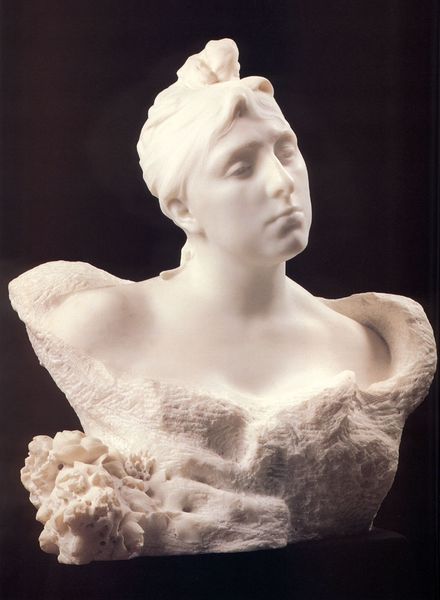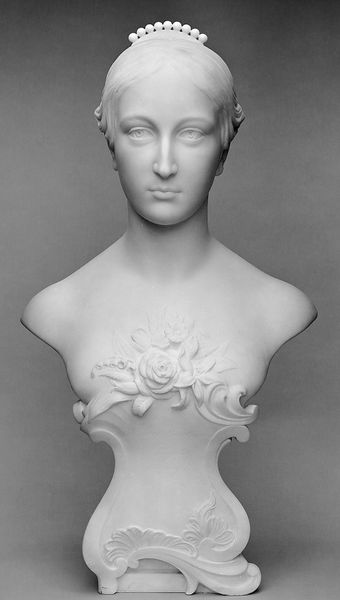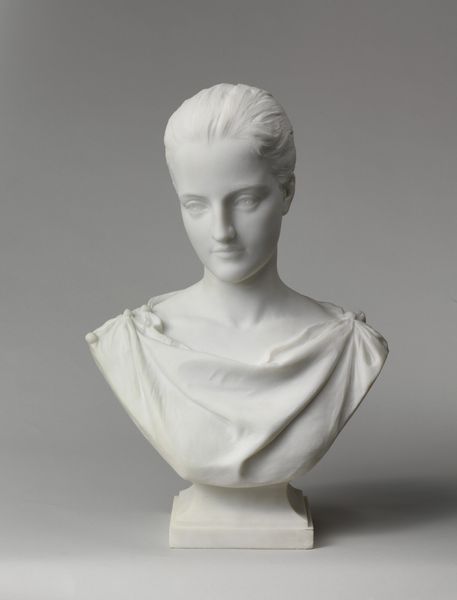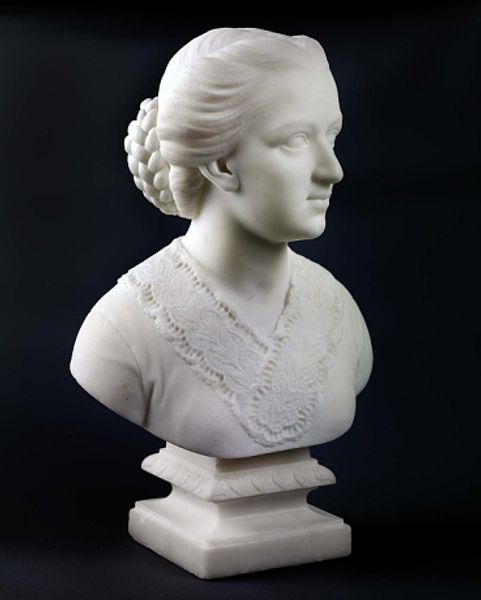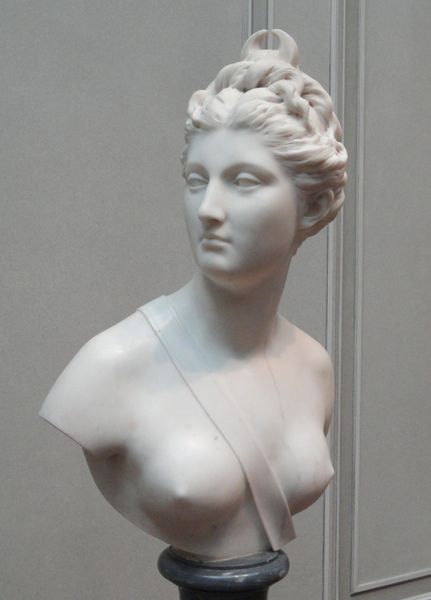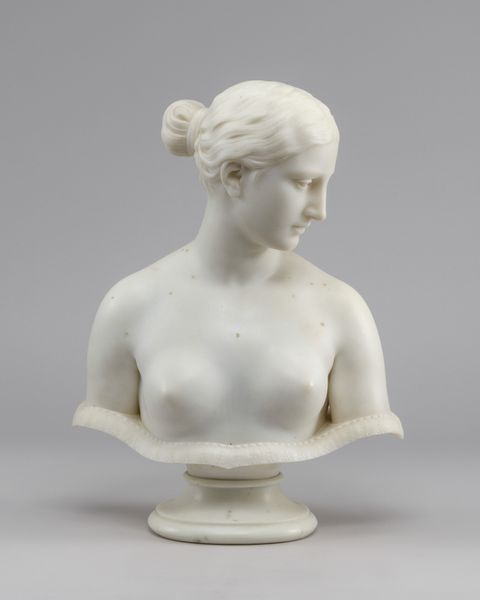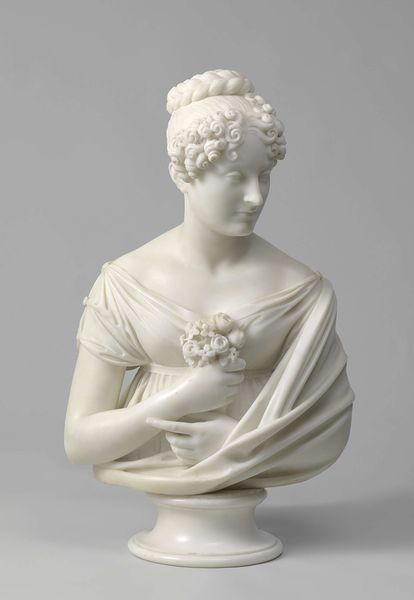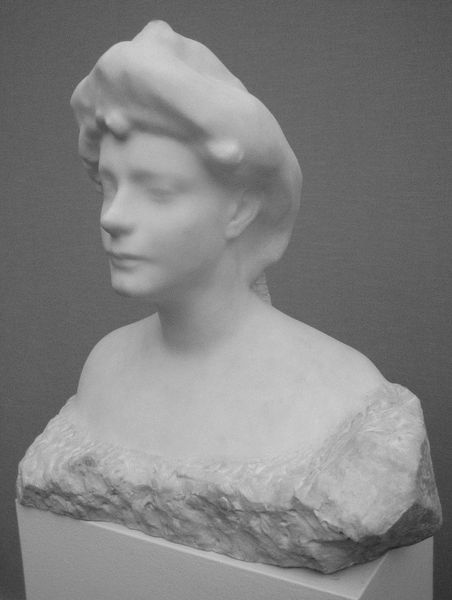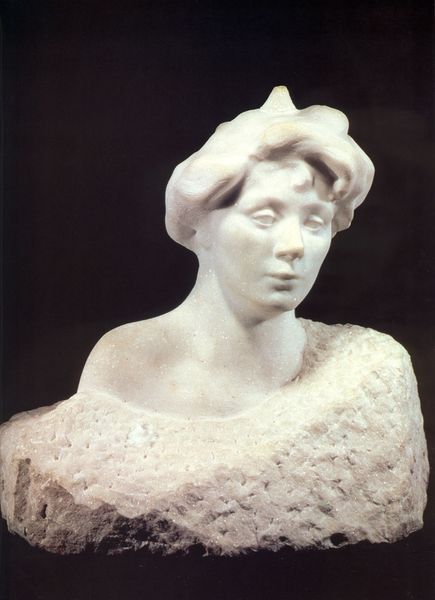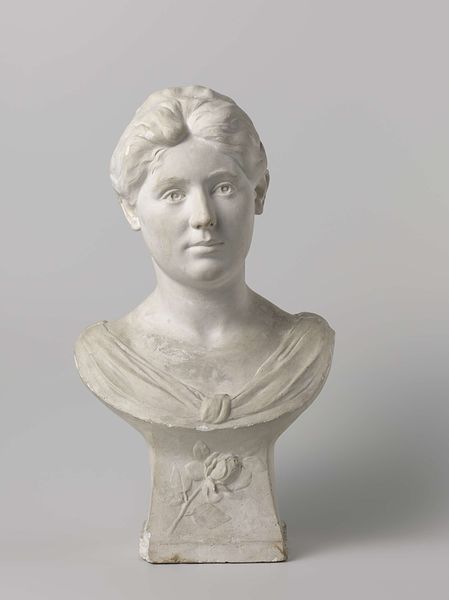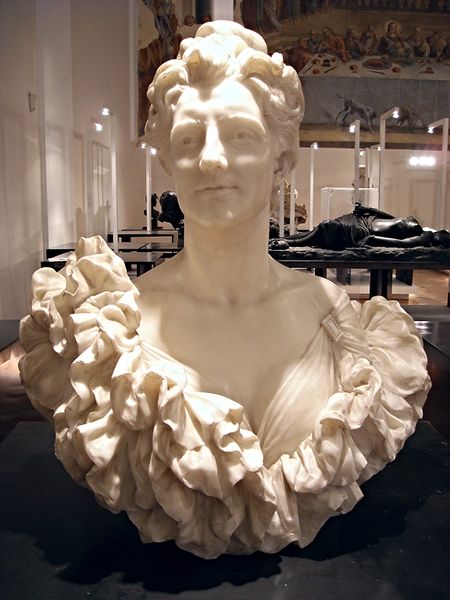
Copyright: Public domain
Editor: Here we have Rodin's marble bust, "Portrait of Varvara Yeliseyeva," created in 1906. There's such a stark contrast between the smooth, almost idealized face and the roughly hewn texture of what I think is her shawl. What's your interpretation of this contrast? Curator: The material choices are fascinating, aren’t they? Notice the explicit labour involved; the polished face showcases skill, almost a mastery, while the unfinished shawl displays the artist's active making. Think about what it means to *not* completely transform the raw material. Editor: It’s almost like revealing the process, the labor, rather than just presenting a finished product. Is he commenting on art production itself? Curator: Precisely. And what was the role of marble as a valued, luxury commodity in this process? Was this commissioned or a personal project? Knowing who funded this labor, or whether it was speculation, tells us something critical about its meaning. What about her status as the subject? Does it tell us how this artwork could function socially? Editor: So, even a portrait can be understood through the lens of production and social context? That’s much more than I initially considered. Curator: Absolutely. Art isn't made in a vacuum. It's material, it's labour, it's tied to capital and class. Look closely: this work encapsulates social and material relationships. Editor: I see the artwork in a totally different light now, and all of those points provide interesting context for the culture that fostered this portrait. Thanks. Curator: My pleasure. Keep questioning how art is produced and consumed; you will always be digging below the surface of its appearance to its meaning and power.
Comments
No comments
Be the first to comment and join the conversation on the ultimate creative platform.
